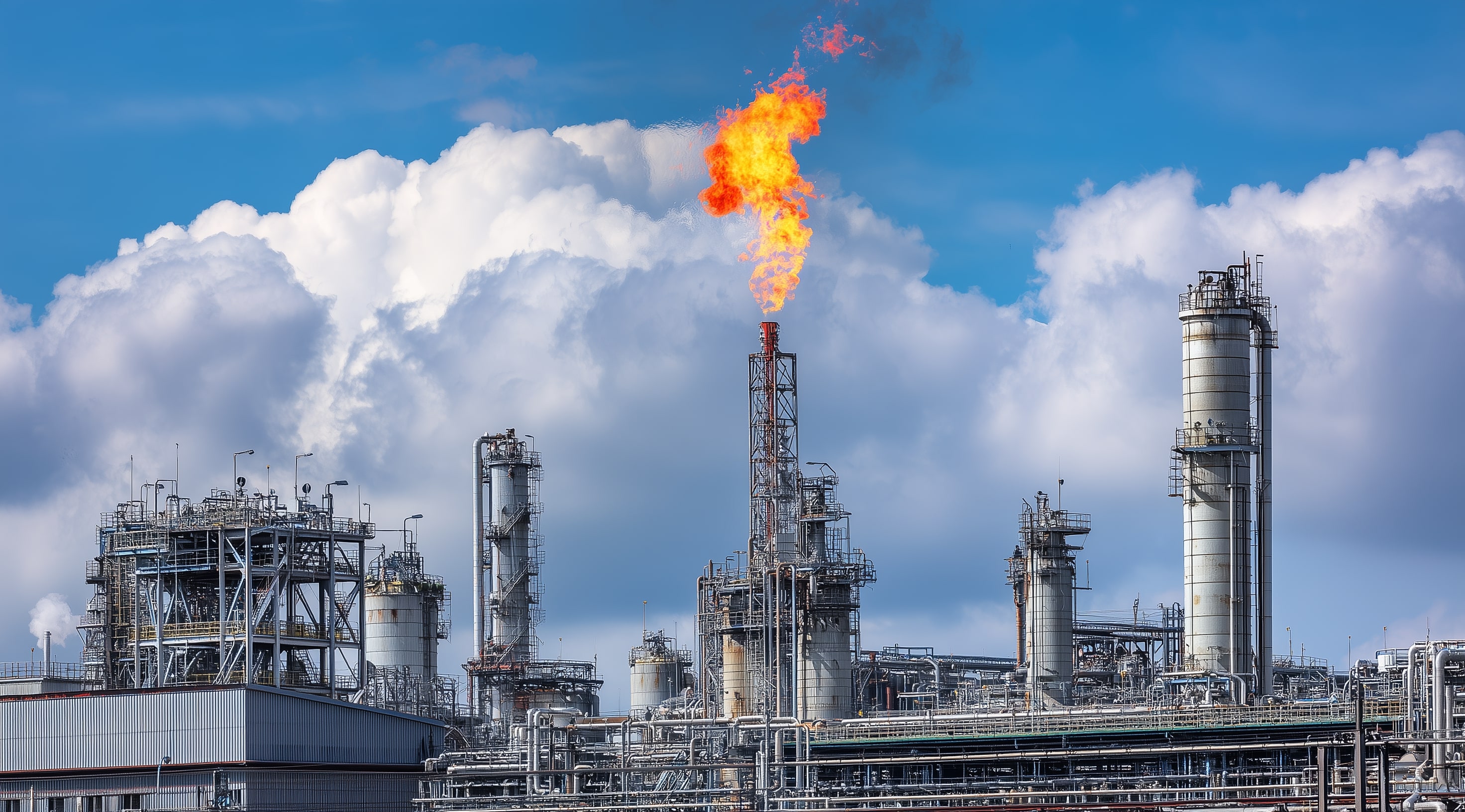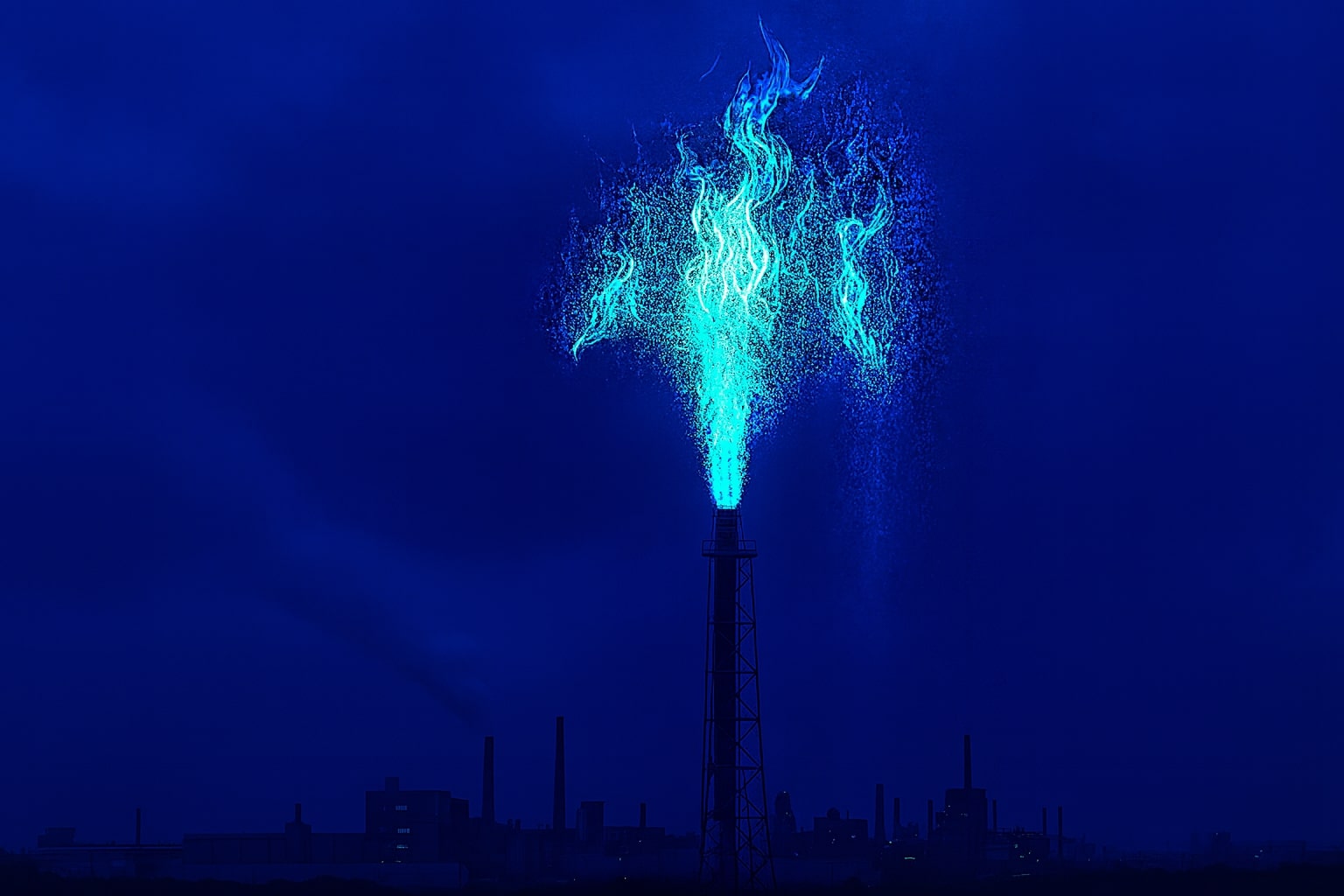
Natural Gas Price Holds $3.30 as Record LNG Exports and Winter Demand Strengthen Market
With U.S. gas storage at 3,878 bcf and LNG flows topping 17.29 bcfd, NG=F steadies near $3.30 amid rising heating demand, a 10% weekly gain, and a potential technical rally toward $3.71–$3.80 | That's TradingNEWS
Natural Gas (NG=F) Faces Tight Supply Balances as Storage Surges and Winter Demand Looms
The U.S. natural gas (NG=F) market is entering a critical inflection point. Prices have slipped modestly to $3.30 per million British thermal units (mmBtu), marking a 1.2% daily decline yet maintaining a 10% weekly gain after two consecutive weeks of losses. The move reflects the market’s tug-of-war between surging storage inventories—now about 5% above the five-year average at 3,878 billion cubic feet (bcf)—and increasing seasonal demand driven by colder weather forecasts and record-breaking liquefied natural gas (LNG) exports. Despite the pullback, futures traders are holding firm to the broader bullish narrative as winter approaches, while technical structures continue to show the market consolidating before its next leg higher.
Supply Expansion and Production Trends Reinforce Short-Term Pressure on NG=F
Average dry gas output in the Lower 48 states has hovered near 106.7 billion cubic feet per day (bcfd) in October, slightly below September’s 107.4 bcfd but just under the record high of 108 bcfd reached in August. This steady production pace has ensured a comfortable supply cushion heading into the winter season. Imports from Canada rose to 7.5 bcfd, while exports to Mexico held at 6.7 bcfd, maintaining cross-border flows despite regional weather volatility. The abundance of supply is a double-edged sword: it caps prices in the short term but reinforces the structural resilience of the U.S. gas market. The Henry Hub benchmark remains near $3.28, slightly below last week’s $3.34, while regional hubs such as Chicago Citygate ($3.12) and Algonquin Citygate ($3.18) trade at slight discounts amid moderate pipeline congestion in the Northeast.
Demand Momentum Builds as Heating Season Kicks In
Natural gas demand in the U.S. is rising sharply, with total consumption expected to increase from 101.7 bcfd this week to 108.5 bcfd within two weeks, supported by residential and commercial heating loads. Meteorologists expect temperatures across the country to trend near seasonal averages through early November, with degree-day forecasts projecting 193 heating degree days (HDDs) and 28 cooling degree days (CDDs) for the next two weeks. The shift from cooling to heating demand marks the seasonal pivot that typically tightens balances and reduces storage builds. Residential demand is forecasted to rise from 7.6 bcfd to 11.4 bcfd, while power generation demand will average 31 bcfd, slightly below September’s levels as renewables and nuclear capture larger grid shares. Despite this, gas-fired generation remains the dominant source of U.S. electricity, contributing 39% of total output, underscoring natural gas’s ongoing centrality in the energy mix.
LNG Exports Hit Record Highs, Anchoring U.S. Gas to Global Price Signals
The standout driver of bullish sentiment in NG=F remains the record-breaking LNG export activity. Flows to U.S. LNG terminals have surged to an all-time high of 17.29 bcfd, exceeding the previous record set in April. The Plaquemines LNG facility in Louisiana alone absorbed 3.7 bcfd, reinforcing the Gulf Coast’s growing dominance in global gas trade. Total LNG export feedgas averaged 16.5 bcfd in October, up from 15.7 bcfd in September, marking a sustained expansion of capacity utilization. With European storage levels stabilizing and Asian demand reviving, the Japan-Korea Marker (JKM) and Title Transfer Facility (TTF) benchmarks remain elevated at $11.27 and $10.88/mmBtu, respectively—well above U.S. Henry Hub pricing. This price spread continues to incentivize transatlantic exports, particularly as freight rates ease and arbitrage margins widen.
Weather Risk and Tropical Storm Melissa Introduce Near-Term Volatility
Traders are also monitoring Tropical Storm Melissa, which is projected to strengthen into a hurricane as it tracks northward across the Caribbean. Although not expected to make U.S. landfall, any shift in its path could temporarily disrupt Gulf Coast production or LNG export flows. Historically, hurricanes have had mixed impacts on natural gas prices—cutting supply through offshore platform shutdowns while simultaneously limiting LNG export volumes. Market participants expect any temporary weakness to be quickly offset by resurgent demand, particularly if cold fronts extend into the Midwest and Northeast in early November.
European Market Ripples and LNG Arbitrage Dynamics
In Europe, natural gas prices remain volatile as energy importers face renewed supply anxiety tied to geopolitical disruptions. The ongoing tension in Eastern Europe has tightened flows through the Ukrainian corridor, forcing European buyers to secure spot LNG cargoes from the U.S. and Qatar. The European Title Transfer Facility (TTF) benchmark has averaged around $10.9/mmBtu, roughly triple U.S. domestic prices, sustaining the profitability of U.S. LNG exports. However, with Asian spot prices now converging toward $11, cargo diversions eastward could emerge, tightening availability for European buyers. Analysts expect that the Atlantic LNG arbitrage will remain Europe-favored until freight rates and weather-driven Asian demand force a realignment later this winter.
Technical Setup: Natural Gas Holds Above Key $3.27 Support
From a technical standpoint, natural gas (NG=F) is consolidating in a tight channel, maintaining support at $3.20–$3.27 while struggling to breach resistance near $3.46–$3.59, where the 200-day moving average resides. The 50-day moving average, currently at $3.25, continues to serve as the market’s primary dynamic support, having generated multiple bounce reactions over the past two sessions. The price action has formed a higher swing low pattern, suggesting accumulation beneath the surface. A sustained close above $3.27 confirms the bullish hammer pattern seen in Friday’s trading, targeting $3.59, with a possible extension to $3.71 and $3.80, corresponding to the 78.6% Fibonacci retracement level. Failure to hold the $3.20 level could trigger a retest of $3.10, but overall momentum remains supportive given the strong fundamental backdrop.
Infrastructure Constraints and Regulatory Delays Raise Long-Term Reliability Concerns
While the immediate focus remains on winter balances, underlying structural risks persist. U.S. gas and electric utilities have warned regulators that limited pipeline capacity, especially in the Northeast, could amplify price spikes during cold surges and elevate blackout risks. Recent filings with the Federal Energy Regulatory Commission (FERC) emphasize that pipeline infrastructure has not expanded at a pace consistent with consumption growth, particularly as more LNG export projects reach commissioning. These bottlenecks could introduce regional dislocations where local hubs like Algonquin Citygate or Transco Zone 6 New York decouple sharply from Henry Hub pricing. The upcoming ANR Heartland Project, approved for environmental review, is expected to alleviate Midwest constraints by 2027, potentially stabilizing Chicago Citygate prices, which currently average $3.12/mmBtu.
Read More
-
QQQ ETF at $614 After a 123% Surge: AI, Rates and 2026 Targets In One Trade
12.12.2025 · TradingNEWS ArchiveStocks
-
XRP ETF Surge: XRPI $11.71 and XRPR $16.55 Track XRP’s $2 Floor and $1B Inflows
12.12.2025 · TradingNEWS ArchiveCrypto
-
Natural Gas Price Forecast: NG=F Clings to $4.12 Support After Weather Shock
12.12.2025 · TradingNEWS ArchiveCommodities
-
USD/JPY Price Forecast – Dollar to Yen Back at 156 as Fed Cut and BoJ Liftoff Collide
12.12.2025 · TradingNEWS ArchiveForex
Market Outlook: Balancing Storage Comfort Against Winter Risk
With inventories 4.5% above the five-year average, the U.S. enters the heating season from a position of relative strength. However, high starting storage often masks late-winter vulnerabilities if sustained cold weather drives heavy withdrawals. The EIA’s weekly injection of 70 bcf underscores how quickly surplus can narrow under colder scenarios. Traders are already pricing in elevated volatility premiums for December and January contracts, suggesting expectations of sharp price swings between $3.00 and $3.80/mmBtu through Q1 2026. The structural growth in LNG exports and the gradual drawdown of shale drilling activity due to lower rig counts could shift balances toward deficit by spring, tightening supply further into 2026.
Strategic View and Investment Bias
Natural gas fundamentals show a finely balanced market — storage is healthy, but demand from exports and weather is accelerating. Technical and macro data point toward upside resilience, especially if winter temperatures trend below forecasts or if LNG feedgas flows remain near record highs. Traders watching NG=F should monitor the $3.27 pivot closely; holding above it keeps momentum intact for a test of $3.59–$3.71, while sustained strength beyond $3.80 could validate a broader bullish continuation targeting $4.00. Conversely, a close below $3.20 could trigger short-term retracements, but fundamental conditions continue to favor long exposure as winter risk premium builds.
Verdict: Buy above $3.27, Hold between $3.10–$3.27, Sell only below $3.00
Natural gas remains in a structurally bullish position driven by record LNG demand, tightening winter balances, and persistent infrastructure limitations. The path forward for NG=F points to a measured but resilient rally — a market shaped not by scarcity, but by strategic competition for every cubic foot as global energy transitions accelerate.



















